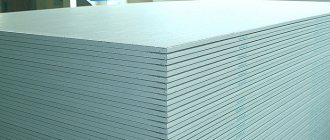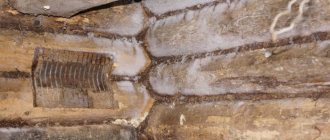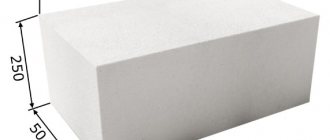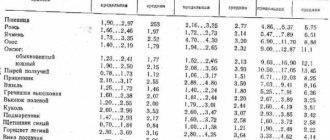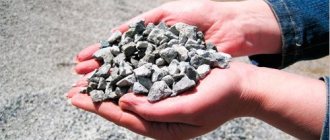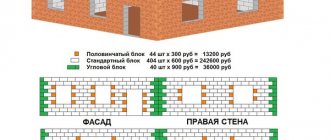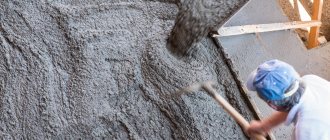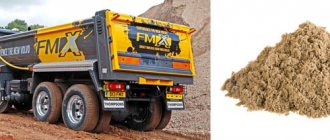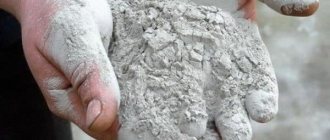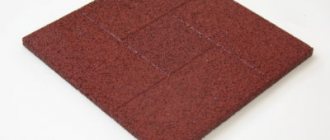The density of a stone is the ratio of the mass of a stone to the mass of water of the same volume. Stone density has a value from 1 to 20. Stones with a value less than 2 are light. Stones with a value from 2 to 4 are of normal weight, and stones with a value of more than 4 are heavy. High-density stones such as diamonds, rubies, sapphires are much heavier than rock-forming stones such as quar and feldspar, and due to this, in fast rivers, high-density stones are deposited earlier and form placer deposits. Mineral density is used to identify stones. The average density of a stone is determined by two methods: the method of hydrostatic weighing of the stone and the method of immersing the stone in heavy liquids.
Hydrostatic weighing method
This method is time consuming and comparatively cheaper.
Hydrostatic weighing method
First, a stone is hung on a thin wire from a hydrostatic balance and its weight is measured in air. Then the stone is immersed in water and its weight is measured again. After weighing, the water volume of the stone is determined by subtracting the weight of the stone in water from the weight of the stone in air. After determining the water volume of the stone, the density of the stone is calculated using the following formula P=M:V
- P is the density of the stone.
- M is the mass of the stone.
- V is the water volume of the stone which is determined by subtraction. V= suspended mass in air - suspended mass in water.
Calculation of the weight and volume of crushed stone: table of correspondence between fractions and weights
All articles. Order a consultation. To obtain complete information about the nearest dealer in your region, use the search form.
How to independently calculate the weight of a monument Home Information Calculate the weight of a monument.
Useful articles
How to independently calculate the weight of a granite monument Knowing the weight of a granite monument is an important question that arises when transporting granite products independently. Formula for calculating the mass of granite In order to calculate the weight of a part, you need to multiply the cubic capacity of the granite element by the mass of a cubic meter of this type of granite.
Example: There is a stele made of Karelian gabbro-diabase measuring cm height, 50 cm width, 5 m thickness. There are only three indicators.
Calculator for calculating the weight of porcelain stoneware
We multiply 1 x 0.5 x 0.05 to get 0.m3. Now we multiply 0. m cubic capacity of the stele by kg mass of cubic capacity of the Karelian gabbro-diabase. It turns out 75 kg. Of course, this is an indicator of a rectangular stele; the mass of a carved stele will be less.
Method of immersion in heavy liquids
This method is very complicated and much more expensive than the first, but it does not take much time. This method is used to identify real stones from artificial stones and fakes. This method is based on the property of heavy water in which solid objects do not sink to the bottom and do not float, but are as if suspended, provided that their density is the same. The stone is first placed in very heavy water, and the stone will be squeezed out to the surface by the water. Then the heavy water begins to be diluted with distilled water, while the density of the water will gradually decrease and when the density of the water becomes equal to the density of the stone, the stone will go into a suspended state. After this, you need to measure the density of the water and you can identify the stone using the table. The density of dilute heavy water is determined in laboratory conditions using special Westphal balances. Stone density table.
| Stone | Density | Stone | Density | Stone | Density |
| Tantalite | 5,18—8,20 | Diamond | 3,47—3,55 | Aquamarine | 2,67—2,71 |
| Cassiterite | 6,8—7,1 | Titanite | 3,52—3,54 | Eye of the Tiger | 2,64—2,71 |
| Wulfenite | 6,7—7,0 | Gemimorphite | 3,52—3,54 | Augelite | 2,7 |
| Galliant | 7,05 | G hypersten | 3,4—3,5 | Marble onyx | 2,7 |
| Cerussite | 6,46—6,57 | Singalit | 3,47—3,49 | Labradorite | 2,69—2,7 |
| Cuprite | 5,85—6,15 | Vesuvian | 3,32—3,42 | Corals | 2,6—2,7 |
| Phosgenite | 6,13 | Dumortierite | 3,26—3,41 | Vivianite | 2,6—2,7 |
| Crocoite | 5,9—6,1 | Epidote | 3,4 | Cordierite | 2,58—2,66 |
| Sheelit | 5,1—6,1 | Rodicite | 3,4 | Aventurine | 2,65 |
| Dzhevalit | 5,60—5,71 | Purpurite | 3,2—3,4 | Rock crystal | 2,65 |
| Zincite | 5,66 | Peridot (peridot) | 3.27—3.37 | Citrine | 2,65 |
| Proust | 5,57—5,64 | Jade | 3,30—3,36 | Prasiolite | 2,65 |
| Pyrite | 5,0—5,2 | Tanzanite | 3,35 | Smoky quartz (rauchtopaz) | 2,65 |
| Hematite | 4,95—5,16 | Dioptase | 3,28—3,35 | Rose quartz | 2,65 |
| Fabulite | 5,13 | Cornerupin | 3,28—3,35 | Amethyst | 2.63—2,65 |
| Chromite | 4,1—4,9 | Diopside | 3,27—3,31 | Aventurine feldspar | 2,62—2,65 |
| Ilmenite | 4,72 | Axinite | 3,27—3,29 | Agate | 2,60—2,65 |
| Zircon | 3,90—4,71 | Ekanite | 3,28 | Moss agate | 2,58—2,62 |
| YAG grenade | 4,6 | Enstatite | 3,26—3,28 | Eleolith | 2,55—2,65 |
| Barite | 4,5 | Tourmaline | 3,02—3,26 | Chalcedony | 2,58—2,64 |
| Smithsonite | 4,3—4,5 | Sillimanite | 3,25 | Chrysoprase | 2,58—2,64 |
| Psilomelan | 4,35 | Smaragdite | 3,25 | Peristerite | 2,61—2,63 |
| Witherite | 4,27—4,35 | Apatite | 3,17—3,23 | Moon rock | 2,56—2,62 |
| Rutile | 4,20—4,30 | Giddenite | 3,16—3,20 | Orthoclase | 2,56—2,60 |
| Chalcopyrite | 4,1—4,3 | Kunzite | 3,16—3,20 | Pseudofit | 2,5—2,6 |
| Spessartine | 4,12—4,20 | Lazulite | 3,1—3,2 | Variscite | 2,4—2,6 |
| Almandine | 3,95—4,20 | Fluorite | 3,18 | Obsidian | 2,3—2,6 |
| Rhinestone | 3,15—4,20 | Andalusite | 3,12—3,18 | G ovlite | 2,53—2,59 |
| Willemite | 3,89—4.18 | Magnesite | 3.00—3.12 | Sanidin | 2,57—2,58 |
| Painite | 4,1 | Euclase | 3,10 | Amazonite | 2,56—2,58 |
| Sphalerite | 4,08—4,10 | Tremolite | 2,9—3,1 | Thugtupit | 2,36—2,57 |
| Ruby | 3,97—4,05 | Actinolite | 3,03—3,07 | Leucite | 2,45—2,50 |
| Sapphire | 3,99—4,00 | Amblygonitis | 3,01—3,03 | Cancrinitis | 2.4—2,5 |
| Celestine | 3,97—4,05 | Nephritis | 2,90—3,02 | Apophyllite | 2,30—2,50 |
| Ganit | 3,99—4,00 | Danburite | 3,0 | Colemanite | 2,42 |
| Anataz | 3,58—3,98 | Datolite | 2,90—3,00 | Gayuin | 2,4 |
| Malachite | 3,82—3,95 | Brazilianite | 2,98—2,99 | Petalite | 2,40 |
| Azurite | 3,75—3,95 | Anhydrite | 2,90—2,99 | Thomsonite | 2.3—2,4 |
| Periclase | 3,7—3,9 | Phenakite | 2,95—2,97 | Chrysocolla | 2,00—2,40 |
| Pleonastus | 3,7—3,9 | Dolomite | 2,85—2,95 | Moldavite | 2,32—2,38 |
| Siderite | 3,85 | Aragonite | 2,94 | Hambergite | 2,35 |
| Demantoid | 3,82—3,85 | Prehnite | 2,87—2,93 | Alabaster (gypsum) | 2,30—2,33 |
| Staurolite | 3,7—3,8 | Jasper | 2,58—2,91 | Sodalite | 2,13—2,29 |
| Pyrope | 3,65—3,80 | Lapis lazuli | 2,4—2,9 | Natrolite | 2,20—2,25 |
| Uvarovite | 3,77 | Beryllonite | 2,80—2,85 | Stichtitis | about 2.2 |
| Alexandrite | 3,70—3,73 | Ward it | 2,81 | Opal | 1,98—2,20 |
| Chrysoberyl | 3,70—3,72 | Soapstone (wen) | 2,7—2,8 | Sulfur | 2,05—2,08 |
| Rhodonite | 3,40—3,70 | Turquoise | 2.60—2,80 | Meerschaum (sepiolite) | 2,0 |
| Rhodochrosite | 3,30—3,70 | Serpentine | 2,4—2,8 | Ulexit | 1,9—2,0 |
| Kyanite | 3,65—3,69 | Garnierite | 2,3—2,8 | Ivory | 1,7—2,0 |
| Benitoite | 3,65—3,68 | Emerald | 2,67—2,78 | Geylussite | 1,99 |
| Rossular | 3,60—3,68 | Pearl | 2,60—2,78 | Kurnakovit | 1,86 |
| Baritocalcite | 3,66 | Beryl | 2,65—2,78 | Jet | 1,30—1,35 |
| Spinel | 3,58—3,61 | Bytovnit | 2,71—2,74 | Amber | 1,05—1,30 |
| Taafeit | 3,6 | Scapolite | 2,57—2,74 | ||
| Topaz | 3,53—3,56 | Calcite | 2,71 |
For this method, only heavy water is suitable and can be diluted with distilled water. Very often solutions of Thule, Clerici and Sushin are used as heavy water.
- Thule solution has a density of 3.2 and can identify a very large number of stones. This solution consists of double potassium iodide and mercury.
- Clerici's solution is toxic and has a density of 4.2, so it is used to identify heavier stones. This solution contains thallium formate and malonate, so this solution is very expensive.
- Sushin's solution has a density of 3.5. This solution consists of a solution of barium iodide and mercury.
All heavy solutions after dilution can be restored to their original density by conventional evaporation in a water bath. If the stone is clean and not diluted with other minerals, then you will determine the very accurate density of this stone using this method.
Varieties of granites
According to the characteristics of the mineral composition, the following varieties are distinguished among granites:
- Plagiogranite is a light gray granite with a sharp predominance of plagioclase with a complete absence or insignificant content of potassium-sodium feldspar, which gives the granites a pinkish-red color.
- Alaskite is a pink granite with a sharp predominance of potassium-sodium feldspar with a small amount (biotite) or absence of dark-colored minerals.
Based on their structural and textural features, the following varieties are distinguished:
- Porphyritic granite - contains elongated or isometric phenocrysts, more or less significantly different in size from the main mass (sometimes reaching 10-15 cm) and usually represented by orthoclase or microcline, less often quartz. Porphyritic granites, in which grains of pink potassium-sodium feldspar are overgrown with light gray plagioclase, acquiring rounded outlines, are called rapakivi granite. This structure contributes to the rapid destruction of the rock, its crumbling.
Geochemical classifications of granites
Widely known abroad is the classification of Chappell and White, continued and supplemented by Collins and Valen. It contains 4 types of granitoids: S-, I-, M-, A-granites. In 1974, Chappell and White introduced the concepts of S- and I-granites, based on the idea that the composition of granites reflects the material of their source. Subsequent classifications also generally adhere to this principle.
- S - (sedimentary) - melting products of metasedimentary substrates;
- I - (igneous) - melting products of metamagmatic substrates;
- M—(mantle)—differentiates of tholeiitic-basaltic magmas;
- A - (anorogenic) - products of melting of lower crustal granulites or differentiates of alkali-basaltoid magmas.
The difference in the composition of the sources of S- and I-granites is established by their geochemistry, mineralogy and composition of inclusions. The difference in sources also suggests a difference in the levels of melt generation: S - supracrustal upper crustal level, I - infracrustal, deeper and often more mafic. Geochemically, S- and I-granites have similar contents of most major and trace elements, but there are also significant differences. S-granites are relatively depleted in CaO, Na2O, and Sr, but have higher concentrations of K2O and Rb than I-granites. These differences are due to the fact that the source of S-granites went through a stage of weathering and sedimentary differentiation. The M type includes granites that are the final differentiated of tholeiitic-basaltic magma or a product of melting of a metatoleiitic source. They are widely known as oceanic plagiogranites and are characteristic of modern MOR zones and ancient ophiolites. The concept of A-granites was introduced by Eby. They showed that they vary in composition from subalkaline quartz syenites to alkaline granites with alkaline masons, and are sharply enriched in incoherent elements, especially HFSE. According to the conditions of education, they can be divided into two groups. The first, characteristic of oceanic islands and continental rifts, is a product of differentiation of alkali-basaltic magma. The second includes intraplate plutons that are not directly related to rifting, but are confined to hot spots. The origin of this group is associated with the melting of the lower parts of the continental crust under the influence of an additional heat source. It has been experimentally shown that when tonalite gneisses melt at a pressure of 10 kbar, a melt enriched in fluorine is formed in petrogenic components, similar to A-granites and granulite (pyroxene-containing) restite.
Geodynamic settings of granite magmatism
The largest volumes of granites are formed in collision zones, where two continental plates collide and thickening of the continental crust occurs. According to some researchers, a whole layer of granite melt is formed in the thickened collision crust at the level of the middle crust (depth 10-20 km). In addition, granitic magmatism is characteristic of active continental margins (Andean batholiths), and, to a lesser extent, of island arcs.
Granites are formed in very small volumes at mid-ocean ridges, as evidenced by the presence of plagiogranites in ophiolite complexes.
The problem of the origin of granites
Granite rocks.
Granites play a huge role in the structure of the crust of the Earth's continents. But, unlike igneous rocks of basic composition (gabbro, basalt, anorthosite, norite, troctolite), analogues of which are common on the Moon and terrestrial planets, there is only indirect evidence of the existence of granites on other planets of the solar system. Thus, there are indirect signs of the existence of granites on Venus[5]. Among geologists there is an expression “Granite is the calling card of the Earth”[6]. On the other hand, there are good reasons to believe that the Earth arose from the same substance as the other terrestrial planets. The first composition of the Earth is reconstructed as being close to the composition of chondrites. Basalts can be smelted from such rocks, but not granites. These facts led petrologists to pose the problem of the origin of granites, which has attracted the attention of geologists for many years, but is still far from being completely resolved.
Currently, quite a lot is known about the origin of granites, but some fundamental problems remain unresolved. One of them is the process of formation of granites. When solid crustal matter is partially melted, clearly identifiable solid residues—restite crystalline phases that have not passed into the melt—are relatively rare. Small amounts of residual material can be seen in S-granites and I-granites. However, restite phases are usually not diagnosed in P- and A-granites. What is the reason for this - with the complete separation of solid phases and melt during the rise of magmatic material, with the subsequent transformation of solid remains, the lack of criteria for their diagnosis, or with a defect in the petrological model itself - has not yet been clarified. The problem of restite residues raises other questions. With partial melting of amphibole-containing rocks of high acidity, only about 20% of low-potassium granite material can be obtained. In this case, 80% of the anhydrous solid residue should remain, consisting of pyroxene, plagioclase or garnet. Although the rocks in the lower part of the continental crust have a similar mineral composition, their fragments carried out by volcanoes do not bear geochemical signs of refractory residual material. There is an assumption that this material was somehow buried in the upper mantle, but there is no direct evidence of the reality of this process. It is possible that in this case the petrological model needs to be adjusted.
There are other uncertainties when studying the process of origin of granites. However, modern research methods have reached a level that allows us to hope that the right solutions will be found in the near future.
The author of one of the first hypotheses about the origin of granites was N. Bowen, the father of experimental petrology. Based on experiments and observations of natural objects, he established that the crystallization of basaltic magma occurs according to a number of laws. The minerals in it crystallize in such a sequence (in accordance with the Bowen series [7]) that the melt is continuously enriched with silicon, sodium, potassium and other fusible components. Therefore, Bowen suggested that granites may be the last differentiates of basaltic melts.
